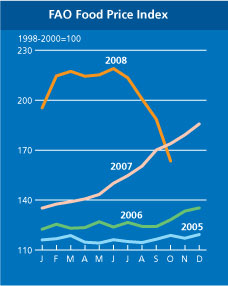A large number of variations on one simple (and very nutritious, being as how one is a cereal and one is a pulse) dish: rice and beans. Everyone who’s anyone (at least in the pressure cooker world of US-based food blogging) is there, with some nifty ideas on that lysine-tryptophan feasteroni.
Nibbles: String, Lake District, Apples, Biochar, Display, Firs, Sweet potato, Rice, Bison
- Lots of agrobiodiversity in one little piece of Neolithic string.
- Traditional cow breed saves plant saves rare moth. The elusive agrobiodiversity win-win-win?
- Centenarian arboreal agrobiodiversity artfully pruned.
- Burning agrobiodiversity. But in a good way. And for a good cause.
- Plant parts create Yuletide fantasy.
- Speaking of Yuletide, Christmas trees need diversity too. And Michigan State is there.
- Sure, it’s impressive, but is it a potato?
- Farming on the edge … of a large reservoir. Life has its ups and downs.
- Aristotle on bison faeces. Yes, that Aristotle.
Aren’t steroids illegal?
Karl, from Inoculated Mind, describes Nature magazine’s selection of plant scientist Richard Sayre (as one of five crop scientists who could change the world) as “a good pick.” Sayre’s pet project, funded by the Bill and Melinda Gates Foundation, is to build a super cassava; 500 g will contain the daily requirements of protein, vitamin A and E, iron and zinc. Karl describes BioCassava Plus as “like golden rice on steroids.” And I guess whether you think that’s a good thing or not depends on what you think of Golden Rice and what you think of steroids.
We’ve crossed swords on Golden Rice before now; I’m not going to go there. I’ll just repeat that I remain unconvinced that Golden Rice will measurably increase the nutritional health of people outside the mostly urban market economy, and that if they were to increase their vitamin A precursor intake with other foods it would, in my view, deliver greater total good.
I’ve made my thoughts on super cassava known too. And again, I repeat the fundamental question; when you have engineered one variety of cassava and planted it across Africa, how are you going to respond when the entire population falls prey to a newly virulent form of some disease?
The answer to nutritional deficiencies is not a super variety of any staple. It is diversity. People in the cities might be able to afford super-staples, and the farmers supplying it might do OK. But they will not help poor farmers either to earn a living or to improve their own nutrition.
Food crisis almost over, people starving as usual
 Agriculture related press releases continue to start with a sentences like “The current crisis in world food prices…”. Take these three of yesterday’s posts on this blog: the above quote is from the article discussed in Great Expectations; we need induced mutations because: “The global nature of the food crisis is unprecedented”; and it is also a reason to go forth and grow halophytes: “There’s a real urgency to addressing the issue of rising food and fuel prices.”
Agriculture related press releases continue to start with a sentences like “The current crisis in world food prices…”. Take these three of yesterday’s posts on this blog: the above quote is from the article discussed in Great Expectations; we need induced mutations because: “The global nature of the food crisis is unprecedented”; and it is also a reason to go forth and grow halophytes: “There’s a real urgency to addressing the issue of rising food and fuel prices.”
Haven’t they noticed that the crisis is (almost) over? Supply is up and speculators are retracting. The first stories about complaining farmers are coming in. Perhaps I am missing the point of the long term trend of dearer oil (fertilizer) and climate change?
Either way, in a couple of months we’ll be back to business as usual. Cheap food, and,
every day, almost 16,000 children that die from hunger-related causes — one child every five seconds.
Nibbles: Beans, Forests
- Fagioli in Italian cooking.
- Most valuable forests for C and biodiversity mapped.
- Guard animals.